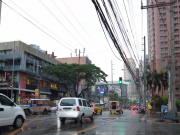The commercial real estate sector in the Philippines is a dynamic part of the nation’s economy, demonstrating robust growth and promising potential. It encompasses retail spaces, offices, and industrial properties, shaping urban landscapes and contributing significantly to economic development.
Investing in commercial real estate in the Philippines promises substantial returns. From bustling malls to office complexes and industrial parks, these spaces offer lucrative opportunities for investors. The right strategy can yield significant financial returns, portfolio diversification, and a steady income stream.
Commercial real estate investments play a crucial role in driving economic growth in the Philippines. By attracting local and foreign investors, they fuel job creation, stimulate business activity, and enhance infrastructure development. The country’s strategic location in Southeast Asia further boosts the demand for commercial real estate as businesses seek to establish a presence in the region.
Approach commercial real estate with a well-informed perspective by understanding market trends, acknowledging risks, and recognizing factors that influence property values. In the following sections, we will explore investing in various types of commercial real estate in the Philippines: retail spaces, offices, and industrial properties. Each offers unique advantages and considerations for navigating this exciting investment landscape.
Types of Commercial Real Estate
Commercial real estate is a broad term encompassing various properties used for business purposes. Understanding what constitutes retail, office, and industrial spaces is important, as they each offer unique opportunities and challenges for investors.
These properties cater to businesses relying on foot traffic. They can range from individual storefronts to large shopping malls. The key characteristic of retail spaces is their focus on customer-oriented businesses such as shops, restaurants, and service providers. They are typically located in areas with high visibility and accessibility to attract consumers.
These spaces are commercial properties designed to provide a workplace for businesses. They can vary in size and layout, from small offices to large corporate buildings. Office spaces often include areas for cubicles, reception, individual offices, and conference rooms. They might not see as much foot traffic as retail spaces, but they are vital for businesses that require a professional setting.
Industrial properties are typically larger and more utilitarian than retail or office spaces. They are used for manufacturing, production, assembly, distribution, and storage. Industrial spaces can include factories, warehouses, and distribution centers. Due to their specific operational requirements, they are usually located in industrial parks or areas zoned for industrial use.
In essence, while all these spaces fall under the umbrella of ‘commercial real estate’, they serve different purposes and cater to different types of businesses. Therefore, understanding these differences is crucial when considering an investment in the commercial real estate sector in the Philippines.
The Commercial Real Estate Market in the Philippines
The commercial real estate market in the Philippines is demonstrating promising trends and noteworthy data that potential investors should consider. According to Statista, the commercial real estate market in the country is projected to grow by 2.39% from 2023 to 2028. This growth is expected to result in a market volume of €0.80tn by 2028, indicating a strong and thriving industry.
A significant factor contributing to this growth is the increasing demand for office spaces. Reports suggest that the Metro Manila office market posted positive net take-up for the fifth consecutive quarter by the end of 2023. This growth is largely driven by the country’s booming outsourcing industry, which is continually fueling the need for more office spaces.
In terms of retail spaces, there has been a surge in the number of commercial properties listed for sale in the Philippines. This trend indicates a vibrant retail sector with various investment opportunities. For industrial spaces, the market remains robust, with a high demand for warehouses and manufacturing facilities, particularly due to the rise of e-commerce and online businesses.
However, like any market, the commercial real estate sector in the Philippines is not without its challenges. Economic recovery and supply pressures are expected to impact the real estate market in 2023. Despite this, JLL Philippines maintains an optimistic outlook for the sector, highlighting the resilience of the market amid economic headwinds.
Investing in Retail Spaces
Retail spaces represent a significant component of the commercial real estate landscape in the Philippines. They offer investors a host of advantages, but like any investment, they also come with their fair share of challenges.
Advantages of Investing in Retail Spaces
- Stable Income Stream
One of the foremost benefits of investing in retail spaces is the potential for a stable income stream. Leases for retail spaces are often long-term, providing investors with a consistent return over an extended period.
- High Returns
Retail spaces, particularly those in prime locations, can command high rental rates. This, coupled with the long-term nature of leases, can result in substantial returns on investment.
- Appreciation Potential
Just like other types of real estate, retail properties have the potential to appreciate in value over time. This appreciation can significantly boost the total return on investment.
- Inflation Hedge
Real estate, including retail properties, can serve as a hedge against inflation. As prices rise, so too can rent, helping protect investors’ purchasing power.
Potential Challenges and How to Overcome Them
- Tenant Turnover
Retail spaces may face high tenant turnover, especially in challenging economic times. To mitigate this risk, investors should focus on properties in prime locations with high foot traffic that are attractive to tenants.
- Property Management
Managing a retail space can be complex, involving everything from maintenance to lease negotiations. Investors can overcome this challenge by hiring a professional property management company.
- Economic Fluctuations
The retail sector can be sensitive to economic downturns. Diversifying your investment portfolio can help cushion against potential losses in the retail sector.
- Digital Competition
With the rise of e-commerce, physical retail spaces face increased competition. However, many consumers still value the in-person shopping experiences, and retail spaces can thrive by offering unique, experiential shopping opportunities.
Investing in retail spaces in the Philippines can be a profitable endeavor, but it requires careful planning and strategic decision-making. By understanding the advantages and potential challenges, investors can make informed decisions and reap the benefits of this dynamic segment of the commercial real estate market.
Office Spaces as an Investment
Investing in office spaces is another prominent aspect of the commercial real estate sector in the Philippines. The benefits, impact of the BPO industry, and potential risks associated with this type of investment make for a compelling discussion.
Benefits of Investing in Office Spaces
- Steady Revenue Stream
Similar to retail spaces, office properties often involve long-term leases, leading to a steady and predictable income stream.
- Strong Demand
The demand for office spaces, particularly in business districts and IT parks, remains high, fueled by local and multinational corporations.
- Potential for Capital Appreciation
Over time, office properties in strategic locations are likely to appreciate in value, increasing the overall return on investment.
Impact of the BPO Industry on Office Space Demand
The Business Process Outsourcing (BPO) industry has been a significant driver of office space demand in the Philippines, especially in the CBD areas like Makati City. With the country being one of the top outsourcing destinations globally, there’s a continuous need for quality office spaces to accommodate these operations. The BPO industry’s growth has led to increased occupancy rates in office buildings, particularly in Metro Manila and burgeoning cities like Cebu and Davao. This trend underscores the promising potential of investing in office spaces.
Risks Involved and Strategies to Handle Them
- Vacancy Risk
There’s always a risk that tenants may vacate, leading to periods without rental income. To mitigate this risk, investors should focus on acquiring properties in prime locations with a high demand for office spaces.
- Market Fluctuations
Economic downturns can impact the profitability of office spaces. A diversified portfolio can help insulate investors from these market fluctuations.
- Maintenance Costs
Office spaces require ongoing maintenance, which can be costly. Proper budgeting and planning can help manage these expenses.
In conclusion, office spaces represent a viable investment opportunity within the commercial real estate sector in the Philippines. However, it’s crucial for investors to conduct thorough market research, understand the impact of industries like BPO on demand, and have strategies in place to handle potential risks.
The Potential of Industrial Spaces
Industrial spaces, which include warehouses, factories, and distribution centers, represent another significant sector within the commercial real estate market in the Philippines. Their importance cannot be understated, especially in an increasingly globalized and interconnected economy.
Importance of Industrial Spaces in the Commercial Property Market
Industrial spaces serves as the backbone of many business operations, facilitating everything from manufacturing to logistics and distribution. They play a crucial role in supply chains, storing goods for distribution to retail outlets or directly to consumers.
The rise of e-commerce has further underscored the importance of industrial spaces. As more consumers shop online, the demand for warehouses in Metro Manila and distribution spaces has surged. This trend and the Philippines’ strategic location in Southeast Asia make the country’s industrial real estate market particularly attractive.
Tips for Successful Investment in Industrial Spaces
Investing in industrial spaces can be lucrative, but it requires careful consideration and planning. Here are some tips for success:
- Location is Key
The location of industrial properties can significantly impact their value. Proximity to transportation hubs, such as ports, airports, and highways, is often critical.
- Understand the Market
Knowledge of the local market is essential when investing in industrial real estate. Factors such as supply and demand dynamics, rental rates, and vacancy rates should all be considered.
- Consider the Property’s Specifications
An industrial property’s size, layout, and features can affect its suitability for certain uses. For example, a distribution center may require ample truck parking, while a manufacturing facility might need specific utilities.
- Due Diligence
Comprehensive due diligence is crucial when investing in industrial real estate. This includes inspecting the property, reviewing leases and financial statements, and understanding zoning regulations.
In conclusion, while industrial spaces might not be the first thing that comes to mind when considering commercial real estate, their potential for return on investment is significant. Understanding their importance and leveraging strategies for successful investment can lead to profitable outcomes.
Key Considerations When Investing
Investing in commercial real estate, whether retail, office, or industrial spaces, requires careful consideration and strategic planning. Potential investors should consider some key factors before making the leap.
Factors to Consider Before Investing in Commercial Real Estate
Location
The location of a property can significantly impact its value and potential for return on investment. Properties in prime locations with high visibility and accessibility often command higher rents and have lower vacancy rates.
Property Condition
The condition of the property is another crucial factor. Potential repair and maintenance costs should be factored into the overall investment calculation.
Market Trends
Understanding current market trends, such as supply and demand dynamics, rental rates, and economic indicators, can provide valuable insight into potential investment opportunities.
Financial Analysis
A thorough financial analysis is essential when investing in commercial real estate. This includes analyzing the potential return on investment, cash flow, and the overall financial feasibility of the investment.
The Role of Market Research and Financial Planning
Market research and financial planning play pivotal roles in successful commercial real estate investment. Comprehensive market research allows investors to understand the competitive landscape, identify promising opportunities, and make informed decisions.
Financial planning, on the other hand, helps investors assess the financial viability of an investment. It involves budgeting for potential expenses, projecting income, and calculating potential returns. It also includes planning for potential risks, such as market downturns or unexpected maintenance costs.
Investing in commercial real estate in the Philippines is not a decision to be taken lightly. It requires careful consideration, thorough market research, and meticulous financial planning. By keeping these key considerations in mind, investors can position themselves for success in this vibrant and dynamic market.
Overcoming Challenges in Commercial Real Estate Investment
Despite its potential for high returns, investing in commercial real estate also comes with its own set of challenges. Understanding these obstacles and employing strategies to mitigate them can significantly increase an investor’s chances of success.
Common Obstacles Faced by Investors
- Market Volatility
Economic downturns and market fluctuations can impact the profitability of commercial real estate investments. These can lead to lower rental rates, higher vacancy rates, and decreased property values.
- Property Management
Managing commercial property can be complex and time-consuming. It involves tasks such as maintenance, lease negotiation, tenant management, and more.
- Liquidity Risk
Unlike stocks or bonds, real estate is not a liquid asset. This means it can take time to sell a property, particularly in a slow market.
- Regulatory Challenges
Commercial real estate investors must navigate a host of regulations, including zoning laws, building codes, and environmental regulations.
Strategies to Mitigate These Risks
- Diversification
Diversifying your investment portfolio can help protect against market volatility. This could involve investing in different types of properties or in different geographic areas.
- Professional Property Management
Hiring a professional property management company can alleviate the burden of managing commercial property. They have the expertise to handle everything from routine maintenance to complex lease negotiations.
- Thorough Due Diligence
Conducting thorough due diligence before purchasing a property can help mitigate risks. This includes a comprehensive assessment of the property’s condition, financial analysis, and understanding of local regulations.
- Legal Assistance
Engaging a real estate attorney can be beneficial in navigating the complex regulatory landscape associated with commercial real estate investment.
Investing in commercial real estate in the Philippines presents its own set of challenges, they are not insurmountable. With careful planning, thorough research, and strategic decision-making, investors can successfully navigate these obstacles and reap the rewards of their investments.
This article discusses the potential of investing in commercial real estate in the Philippines, focusing on retail, office, and industrial spaces. Each sector offers unique benefits: retail spaces provide stable income and high returns, office spaces have strong demand due to the booming BPO industry, and industrial spaces play a crucial role in the global economy, especially with the rise of e-commerce.
However, commercial real estate investment also comes with challenges, such as market volatility, property management, liquidity risk, and regulatory issues. To mitigate these risks, the article suggests strategies like diversification, hiring professional property management, conducting thorough due diligence, and getting legal assistance.
The article concludes by emphasizing the importance of thorough research and due diligence before investing in commercial real estate. Despite potential challenges, careful planning, strategic decision-making, and a keen understanding of the market can lead to rewarding outcomes in the dynamic commercial real estate market in the Philippines.

























